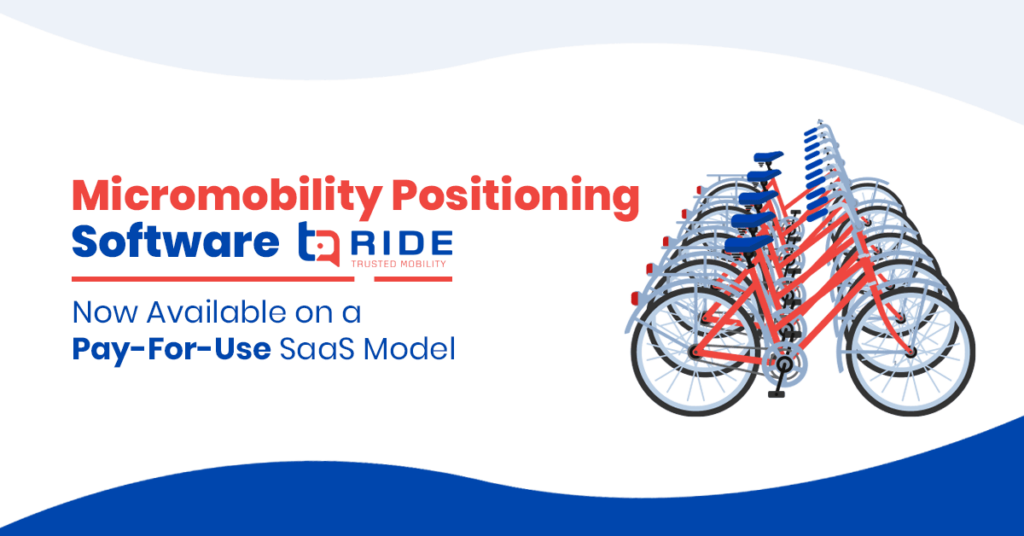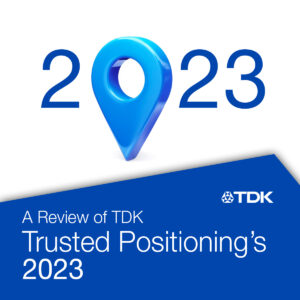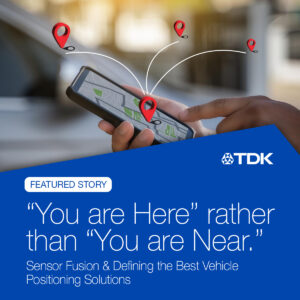The positioning technology that allows users to easily find and properly park rented eScooters and eBikes is now available to service providers on a pay-for-use Software-as-a-Service (SaaS) model. Micro mobility service providers can benefit from next generation positioning technology that provides superior location information and more accurate heading than GNSS alone. To better align with the pay-for-use business model of service providers, TDK Trusted Positioning’s RIDE software is now available on a pay-for-use SaaS model. This web licensing service model allows customers to transition licenses freely between bikes when one group of bikes may be in a municipality that requires heading for parking while others do not, or in times of seasonal changes or in cases of damage or theft when some bikes will be in operation and others will not. The goal of this model is to reduce up-front capital costs and align software licensing costs to typical business models used by micro mobility service providers.
Why are Service Providers Choosing RIDE?
Pay-for-use SaaS Model Aligned with the Business Model of Rentals
Service providers only incur charges when the eScooter or eBike is in use, which aligns with when providers are earning rental fees. Service providers can also benefit from floating licenses that are not specific to a particular piece of equipment. Licenses can be transferred between eBikes or eScooters, which is beneficial if there are more eBikes or eScooters in use in one city due to optimal riding weather over another that is experiencing adverse weather or road conditions.


Enforcement of Proper Parking Orientation
With RIDE, user rental sessions will not end until the eScooters or eBikes are dropped off in an appropriate location and orientation. When using GNSS alone, eScooters and eBikes can be left carelessly on corners or sidewalks blocking pedestrian paths and causing unsafe conditions. Government regulations are changing in response to the rapid adoption of this form of urban transportation, and service providers need a proactive and accurate approach to managing their impact to city streets and sidewalks to ensure orderly parking.
Detection of Driver Dynamics

Unlike a GNSS-only solution, RIDE can also detect driver dynamics, crashes, and unsafe or erratic riding such as swerving. The solution can also track riders full trip statistics, needed for city level infrastructure planning. Not only does RIDE detect the driver dynamics, it also geo-locates these events and their timing. In this example we can see rough use detected at three separate points within the parking lot as the user was swerving.

Reserves Power Supply
RIDE provides continuous outputs and improves performance while saving power by keeping GNSS turned off when not needed. This is a low-power solution that provides always on positioning in the background, even when a vehicle is parked. RIDE only turns on GNSS when significant movement is detected by the sensors and can track orientation deviations without GNSS.
Keeping the sensors on in low-power mode allows an accurate position start at the beginning of the next rental session, even if GNSS is inaccurate or unavailable, as well as allows tracking and monitoring of the vehicle movement in between rental sessions enabling detection of unauthorized removal of the vehicle whether the person is on foot or in a car.


Extends Service Coverage
RIDE can also provide accurate drop-off position without GNSS, even when moving indoors or under covered areas. In this example, we see an eScooter enter an underground parking garage. GNSS stops at the entrance of the garage while RIDE provides seamless route tracing without GNSS to the indoor drop-off position.
Without GNSS updates, the position error of RIDE will accumulate with respect to distance travelled. Typical drift is approximately 3% of distance travelled without a GNSS update, which in this instance would equate to 3 meters of accuracy after travelling 100 m underground.
Cloud Updates
Hosted on the cloud, RIDE allows service providers to update software seamlessly across their fleet of eScooters and eBikes.
RIDE improves efficiency, safety and user experience through improved positioning, orientation, and context for the shared micro mobility industry.
Contact us to learn more about RIDE.



